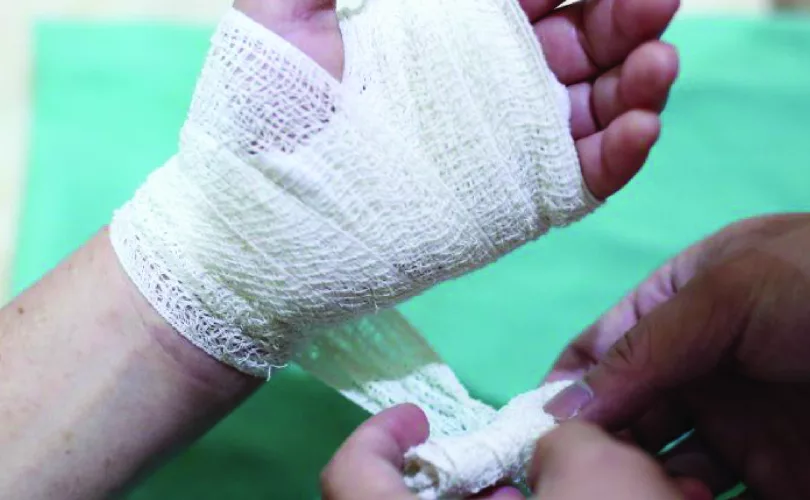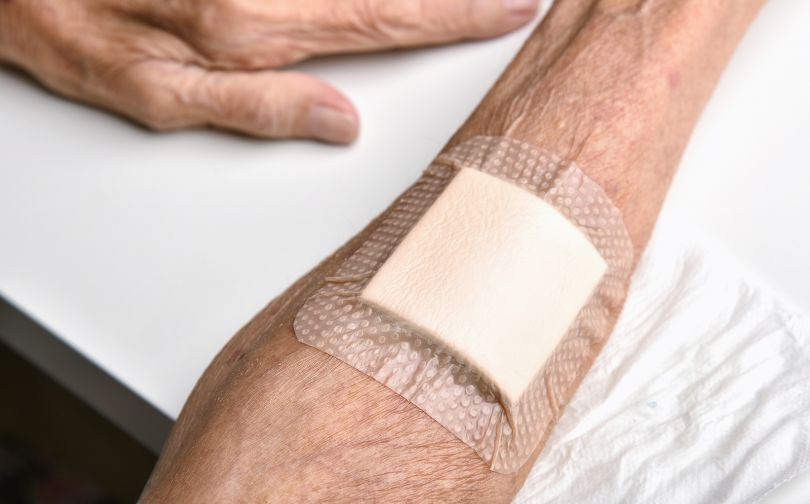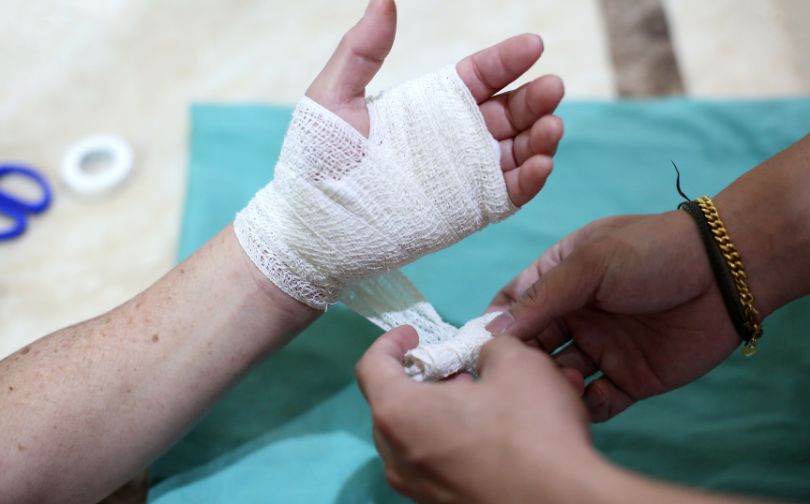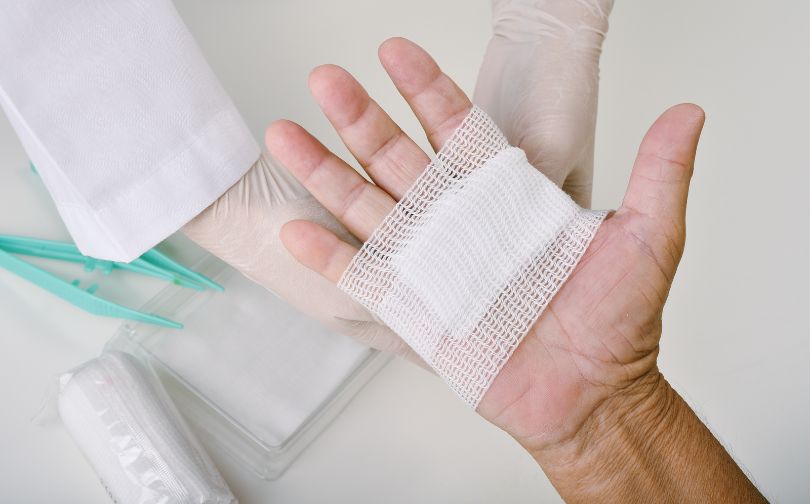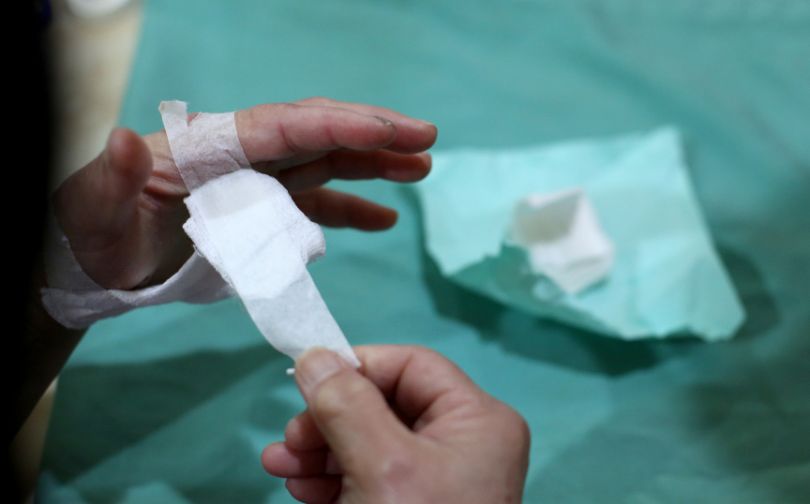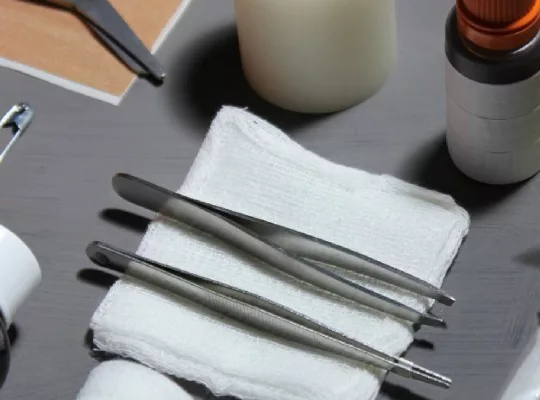Treating wounds properly is crucial for healing, yet many people struggle to choose the right wound dressing. This decision can feel overwhelming due to the wide range of options available, each designed for specific wound types and healing stages.
Improperly chosen dressings can lead to delayed healing, discomfort, or even infection. With so much at stake, understanding the basics of wound dressings can help ease confusion.
In this guide, you’ll learn about different types of wound dressings, their purposes, and when to use each one. By the end, you’ll have a clear picture of which dressing works best for different wounds, helping you make safe and effective choices for healing.
1. Transparent Film
Transparent film wound dressings are quite basic but very effective. The polymer membrane is totally transparent and is adhesive on one side.
The adhesive side is applied to the wound and surrounding area, sticking to the skin to keep the wound dressing in place.
The transparent film dressing protects the wound from bacteria which helps to prevent infection. It also stops liquid from entering the wound, and will stop the patient’s clothes from sticking to the wound and leaving fibers behind.
The main purpose of transparent film dressing is to allow the doctor or medical professional to monitor the progress of the wound without disturbing it. There is no need to remove the dressing to check underneath, as the dressing itself is see-through.
When Should You Use A Transparent Film Dressing?
Transparent film dressings tend to be used for minor wounds, surface wounds, lacerations and abrasions. They can also be used on the sites of surgical incisions and IVs as well as on second-degree burns.
2. Gauze
Gauze is a type of material that is used to dress wounds. The gauze cloth is made up of interwoven fabric fibers which are slightly stretchy.
Gauze dressings come in different shapes and sizes which makes them very versatile. They are one of the cheapest, most commonly used and readily available wound dressings, especially in the roll form which is a regular feature of first aid kits.
Gauze dressings are breathable and absorbing. They soak up any liquid that comes from the wound – such as blood, plasma or discharge – whilst allowing air to reach the skin.
You can easily cut gauze down to shape, you can wrap it around a wound, you can pin it with a safety pin, or you can place it underneath a bandage.
When Should You Use Gauze Dressing?
Gauze dressings can be used in lots of different scenarios, especially if the wound is still bleeding and is not suitable to be wrapped in a bandage.
It is often used on wounds that require wrapping or packing, wounds that need draining, or wounds that give off frequent discharge.
Gauze is inexpensive so you can use it on wounds that require frequent dressing changes. It is also commonly used on infected wounds.
3. Foam
Foam dressings are made out of soft polyurethane and have a bouncy, spongy consistency. They can be adhesive or non-adhesive, and come in lots of different shapes and sizes. Foam dressings will not apply pressure to the wound, and are great for offering some protection to the vulnerable area.
Foam dressings will keep the area of the wound moist, and they will absorb some of the liquid that comes from the wound.
The foam doesn’t stick to the wound like some other dressings, so you are not at risk of causing further damage when the dressing is removed.
When Should You Use Foam Dressing?
Foam dressings can be used as a primary dressing or as a secondary dressing underneath a bandage or on top of gauze.
They also make excellent secondary dressings for wounds that require packing. Foam dressings are used for full thickness or partial thickness wounds, and are often used on burns, skin grafts, blisters and pressure ulcers.
4. Hydrogel
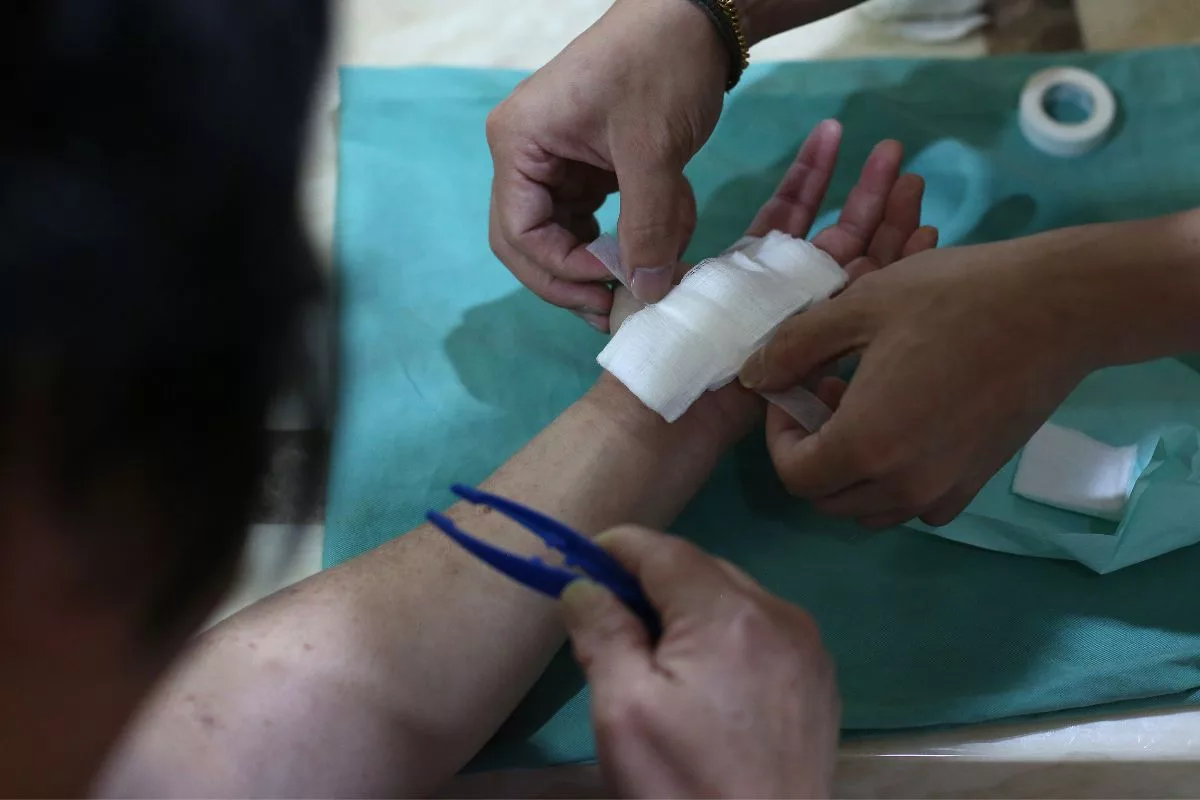
Hydrogel dressings are made up of 90% water suspended in a gel that swells when it comes into contact with water. Hydrogel dressings maintain a warm and moist environment which is good for healing, whilst keeping bacteria and contaminants away from the wound.
Hydrogel can be great for easing pain as it flattens out the skin and prevents puckering etc. It also helps the skin to heal more uniformly and reduces the risk of infection.
Hydrogel dressings are still quite a modern addition to medical practice but they have already made a big difference to wound care.
When Should You Use Hydrogel Dressing?
Hydrogel dressings are ideal if you need to keep a wound moist or introduce some moisture to a dry wound.
They are often used on necrotic wounds or wounds with dead tissue, as the moisture helps the dead or necrotic tissue to come away painlessly.
Hydrogel is only suitable for wounds that release small amounts of liquid, otherwise the wound site can become too wet and the risk of infection increases.
5. Hydrocolloid
Hydrocolloid dressings are similar to hydrogel dressings in that they create a moist environment which can promote healing. However, hydrocolloid dressings are made up of an absorbent pad of flexible, gel-like material within a waterproof film.
Hydrocolloid dressings come with or without adhesive surrounds, and are available in lots of different shapes and sizes. They keep bacteria and other contaminants out of the wound, including liquids due to the waterproof backing.
The inner layer of the dressing absorbs liquids released from the wounds like plasma and blood cells, whilst maintaining a good level of moisture.
They are very useful, they don’t need to be changed as often as some other types of dressings, and they help to prevent scarring.
When Should You Use Hydrocolloid Dressing?
The flexibility of these dressings makes them perfect for using on awkward areas like knees and elbows. They are ideal for burns, necrotic wounds, and pressure ulcers. They can also be used on wounds that release medium amounts of liquid and need a little bit of draining.
6. Composite Dressings
Composite dressings are multi-layered wound care products designed to create an ideal healing environment.
These dressings generally consist of a semi- or non-adherent layer, an absorbent layer, and a bacterial barrier, combining to protect the wound from infection while managing exudate. They are versatile, offering ease of application and removal with minimal trauma to the wound bed.
Suitable for moderate to heavy exudate wounds, composite dressings can be used as primary or secondary options and are chosen for their ability to conform to body contours, enhancing both comfort and flexibility.
When to Use Composite Dressings?
Consider composite dressings for wounds with moderate to heavy exudate, such as pressure ulcers or surgical wounds, where both absorption and protection are essential.
7. Silver Dressings
Silver dressings integrate silver compounds known for their antimicrobial properties. These dressings release silver ions that reduce bacterial presence within the wound, proving effective against a wide range of microorganisms.
Available in multiple forms like foams, alginates, and hydrogels, silver dressings can be applied to various wounds and are instrumental in infection control.
By maintaining a moist healing environment, they help reduce infection risk and support the healing process, making them ideal for infected wounds or those at high infection risk.
When to Use Silver Dressings?
Use silver dressings for infected wounds or wounds prone to infection, particularly chronic wounds like diabetic ulcers where managing bacterial load is essential.
8. Collagen Dressings
Collagen dressings support wound healing by creating a matrix that encourages new tissue growth. Made from animal-derived collagen (usually bovine or porcine), they help the wound bed form new collagen fibers.
These dressings maintain a moist environment that promotes healing, reduces inflammation, and fosters granulation tissue formation. Collagen dressings are suitable for partial-thickness burns, chronic ulcers, and surgical wounds.
When to Use Collagen Dressings?
Collagen dressings are ideal for chronic wounds, like pressure ulcers or diabetic foot ulcers, where supporting new tissue growth and granulation is vital.
9. Non-Adherent Dressings
Non-adherent dressings protect wounds without adhering to tissue, thus minimizing pain during dressing changes.
Typically designed with a soft mesh or film, they allow exudate to pass into an absorbent layer while preventing contact with the wound.
These dressings are well-suited for superficial wounds, such as abrasions, burns, and surgical incisions, providing a protective barrier that allows the wound to heal without disruption.
When to Use Non-Adherent Dressings?
Non-adherent dressings are ideal for superficial wounds like abrasions or burns where minimal disruption is desired. They are especially beneficial for sensitive skin and fragile tissues.
Summary
Understanding the different types of wound dressings and when to use them can have a big impact on how well the wound heals and can also assist with the prevention of infection.
Remember that some wounds will require medical treatment from a professional, so if you are concerned you should seek medical attention.
FAQs
Why Use Collagen Dressings?
Collagen dressings support wound healing by promoting new tissue growth and providing a moist environment conducive to cell proliferation. They are particularly beneficial for chronic wounds and burns due to their regenerative properties but are generally not suitable for dry wounds or wounds with eschar tissue.
What Benefits Do Hydrogel Dressings Offer?
Hydrogel dressings provide essential moisture to dry or necrotic wounds, facilitating autolytic debridement and offering pain relief. They are particularly beneficial for wounds that require hydration, such as necrotic tissue and burns, as they create an optimal environment for wound healing and patient comfort.
When Are Gauze Dressings Recommended?
Gauze dressings are highly versatile and are commonly used for wounds requiring frequent changes, including infected or highly exuding wounds. They can absorb excess fluid and provide a protective layer, although they often need a secondary dressing to secure them in place and optimize healing.
How Do Composite Dressings Function?
Composite dressings incorporate multiple materials to address varied wound care needs, including absorption, moisture retention, and protection. They are particularly suitable for complex wounds with fluctuating exudate levels, providing a balanced environment that protects the wound while promoting optimal healing conditions for diverse wound types.

